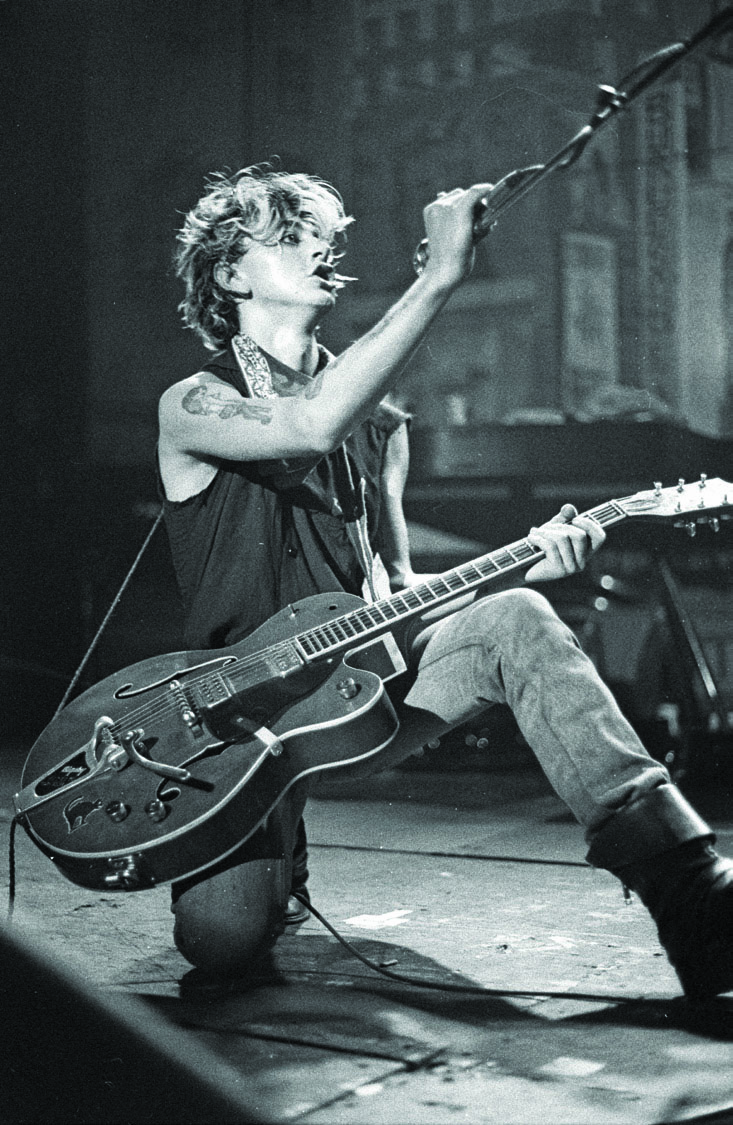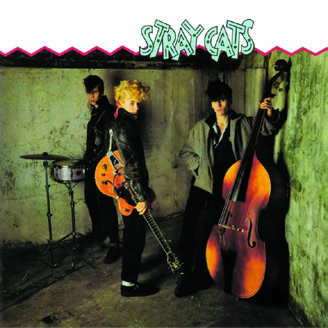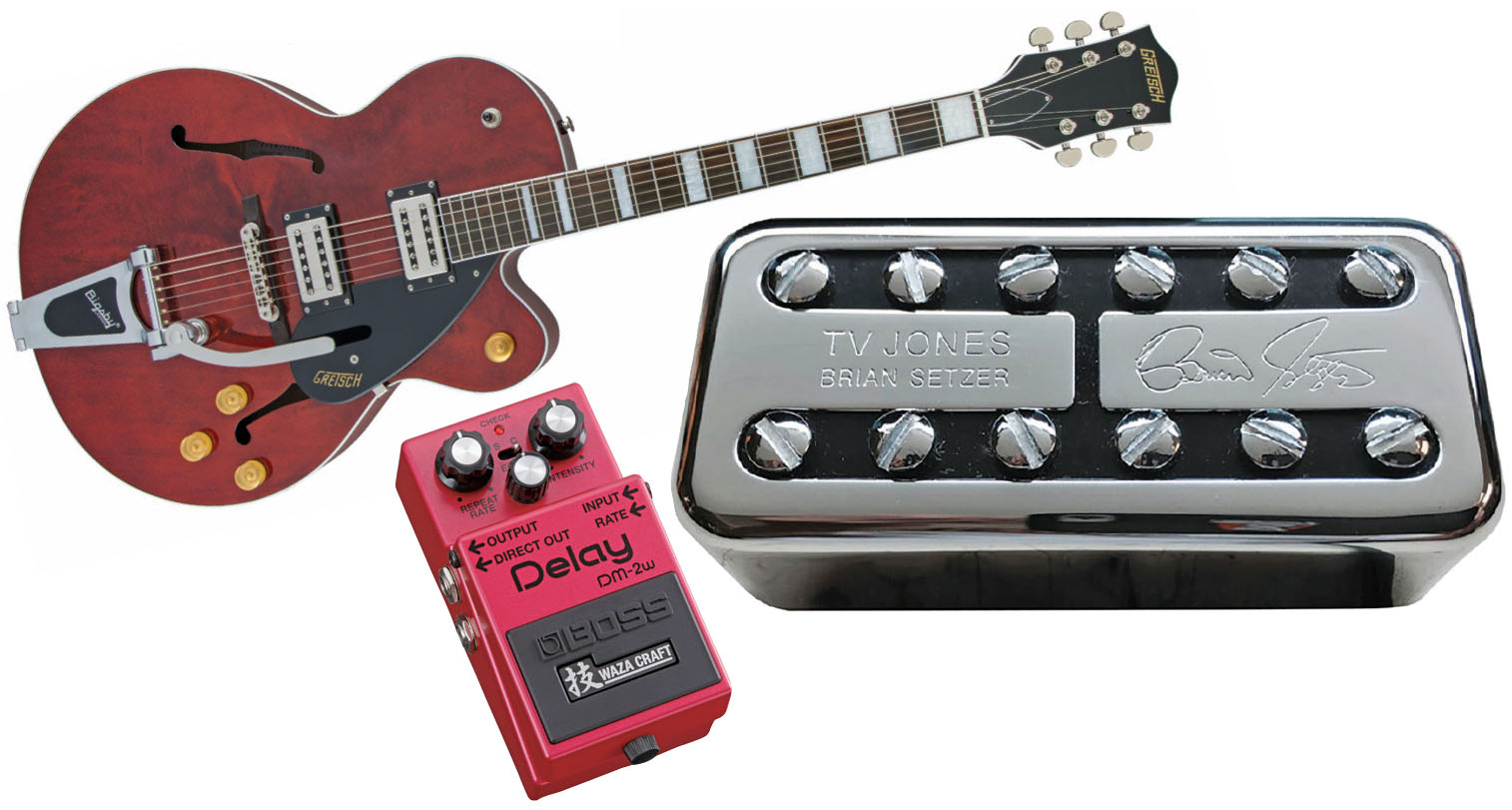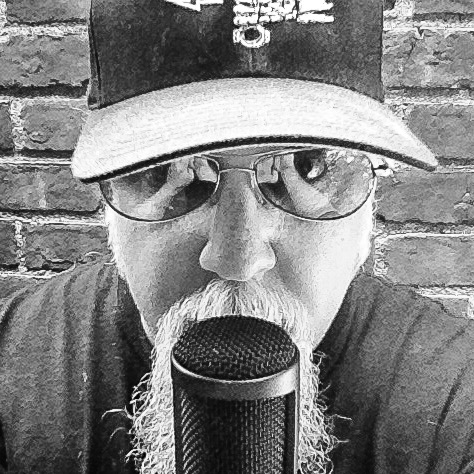The Secrets Behind Brian Setzer's Guitar Sound on Stray Cats' "Rock This Town"

When Brian Setzer recorded “Rock This Town,” he plugged his 1959 Gretsch 6120 directly into Eden Studios’ SSL 4000E console—a technique favored by producer Dave Edmunds, who recorded his own guitar parts for Rockpile’s Seconds of Pleasure album at Eden using the same method just a few months before. The SSL console’s preamps, EQ and compressors helped generate amp-like warmth and body while retaining crystalline clarity, and a touch of vintage ambience came courtesy of a tape echo unit patched into the board.

Since few of us have a fully loaded vintage SSL 4000E at our disposal, for this month’s entry I’m going to make an exception and describe Brian Setzer’s live rig during 1981 at the beginning of the Stray Cats’ rise to fame.
Fortunately, Setzer’s main rig has remained pretty much consistent since then: a 1959 Gretsch 6120 with PAF Filter’tron humbuckers, 1963 Fender Bassman head with matching Fender 2x12 cabinet and an echo/delay unit—initially a Boss DM-2 Analog Delay (or an Electro-Harmonix Memory Man in a few instances) before Setzer adopted his mainstay Roland RE-301 Space Echo in the early Eighties.
The key to Setzer’s tone is pushing the Bassman’s volume up to the limits of its clean headroom where just a slight amount of overdrive emerges. This provides just the right balance of thick, full-bodied tone and the Gretsch’s characteristic jangle and twang. In the early days when he was using analog delay pedals, Setzer plugged into the Bassman’s Bass channel as its higher output gain paired better with pedals, but when he got the RE-301 he switched to the Normal channel as the RE-301’s built-in preamp provided the desirable gain he prefers up front while allowing the amp to maintain a cleaner overall tone. Setzer usually sets his delay to a fast slapback setting (between 60 to 120 milliseconds) with a single repeat. Use up to three repeats if you want more of a reverb-like effect.
ORIGINAL GEAR
● GUITAR: 1959 Gretsch 6120 (both pickups), master tone switch: middle setting (neutral), master, neck and bridge volume controls all at 10 ● AMP: 1963 Fender Bassman head with 6G6-B circuit (Bass channel, Volume: 4.5, Treble: 8, Bass: 5, Presence: 10) ● CABINET: 1963 Fender Bassman 2x12 with Oxford 12L6 12-inch speakers (later changed to Celestion V30s) ● EFFECTS: Boss DM-2 Analog Delay (Repeat Rate/delay time: 4, Echo/mix: 5, Intensity/feedback: 0) ● STRINGS/TUNING: Dean Markley Nickel Steel Regular .010, .013, .017, .026, .036, .046/Standard ● PICK: Fender Medium

GET THE SOUND, CHEAP!
All the latest guitar news, interviews, lessons, reviews, deals and more, direct to your inbox!
● Gretsch G2420T Streamliner ● TV Jones Brian Setzer Signature pickups ● Fender Blues Junior Lacquered Tweed 1x12 combo ● Boss DM-2W Delay Waza Craft
TONE TIP: The TV Jones Brian Setzer Signature pickups are a key element in reproducing Setzer’s signature crisp treble and growling low midrange punch. If you can afford to spend a few more bucks and want to get even closer to Setzer’s tone, Tavo Vega (thenocturnebrain.com) offers a wide variety of pedals and amps inspired by the man himself.
Chris is the co-author of Eruption - Conversations with Eddie Van Halen. He is a 40-year music industry veteran who started at Boardwalk Entertainment (Joan Jett, Night Ranger) and Roland US before becoming a guitar journalist in 1991. He has interviewed more than 600 artists, written more than 1,400 product reviews and contributed to Jeff Beck’s Beck 01: Hot Rods and Rock & Roll and Eric Clapton’s Six String Stories.



